25+ Sample Annual Evaluation Forms
-

Annual Employee Evaluation Form
download now -
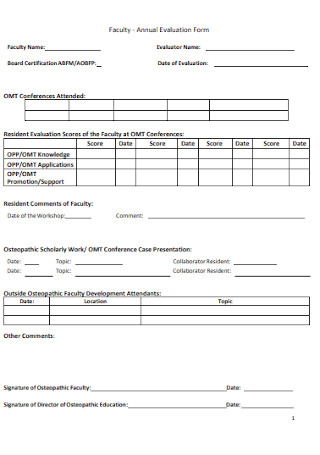
Faculty Annual Evaluation Form
download now -
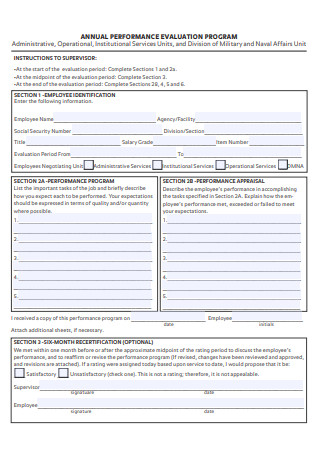
Annual Performance Evaluation Form
download now -
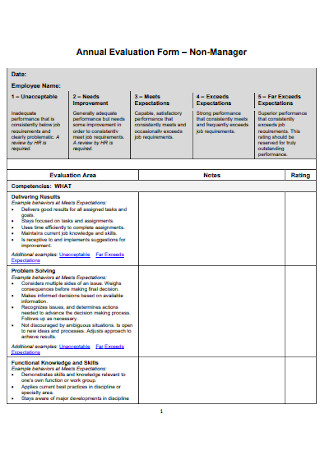
Non-Manager Annual Evaluation Form
download now -
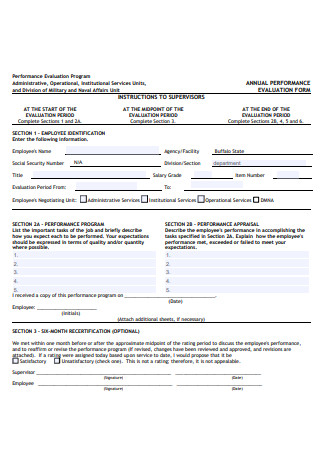
Annual Program Evaluation Form
download now -
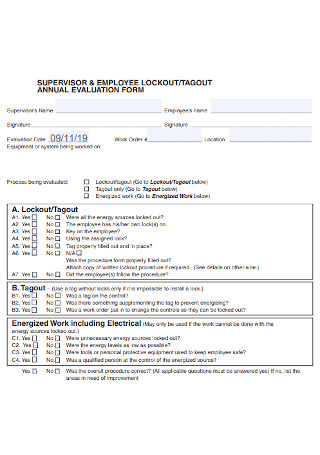
Tagout Annual Evaluation Form
download now -
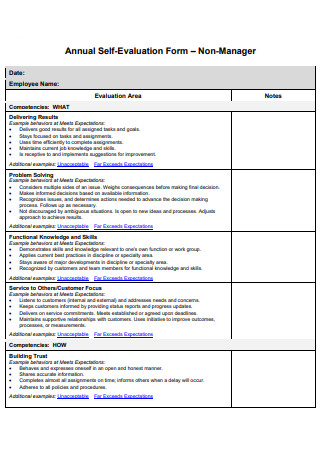
Annual Self Evaluation Form
download now -
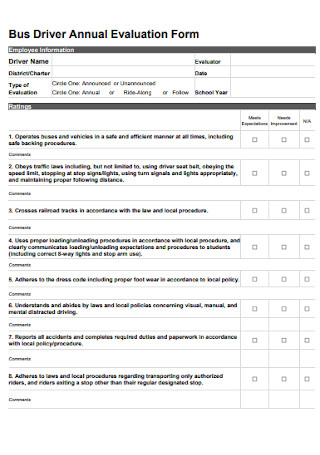
Bus Driver Annual Evaluation Form
download now -
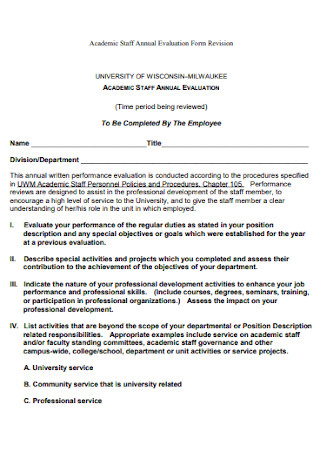
Academic Staff Annual Evaluation Form
download now -
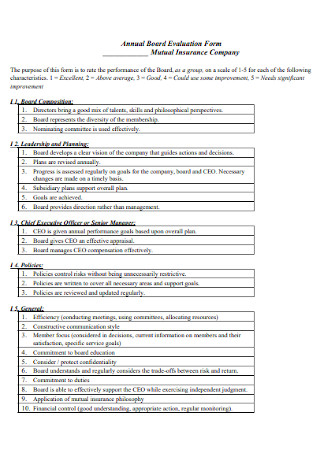
Annual Board Evaluation Form
download now -
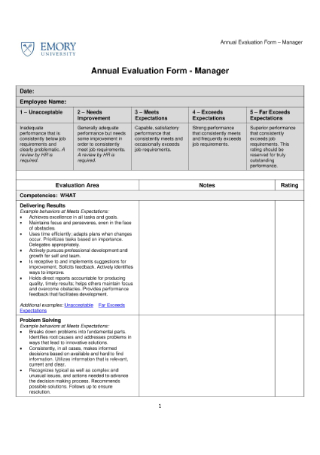
Sample Annual Evaluation Form
download now -
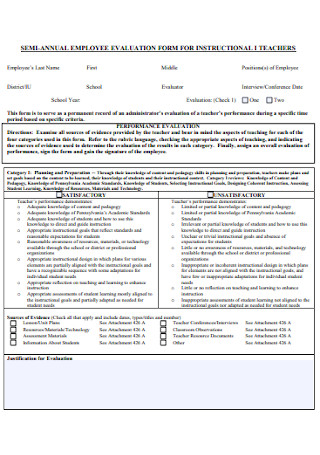
Semi Annual Evaluation Form
download now -
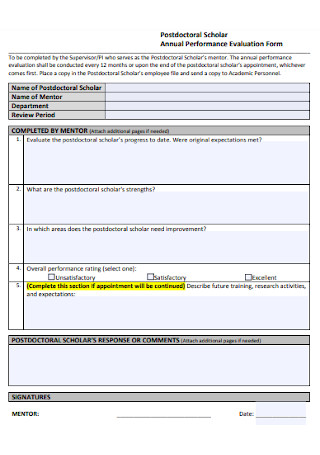
Scholar Annual Evaluation Form
download now -
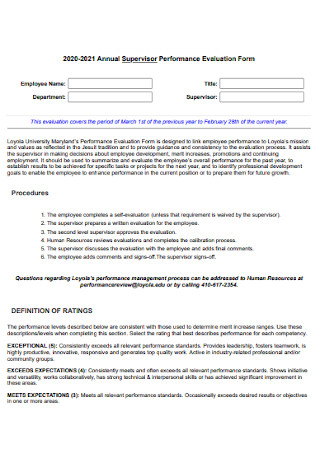
Annual Supervisor Evaluation Form
download now -
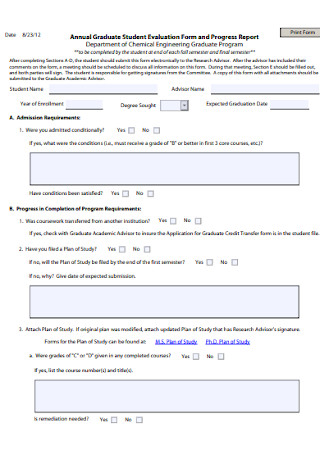
Annual Evaluation Form and Report
download now -
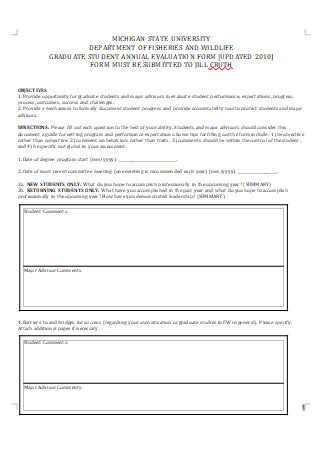
Student Annual Evaluation Form
download now -
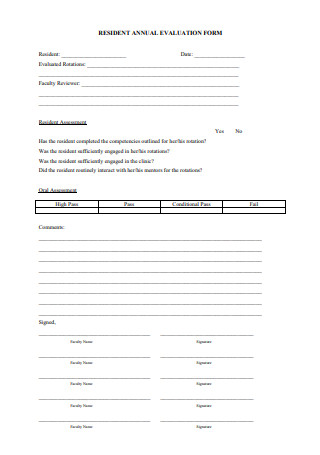
Resident Annual Evaluation Form
download now -
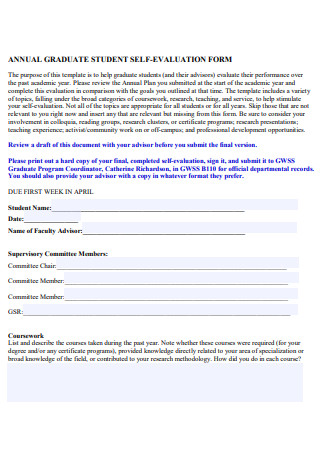
Annual Student Evaluation Form
download now -
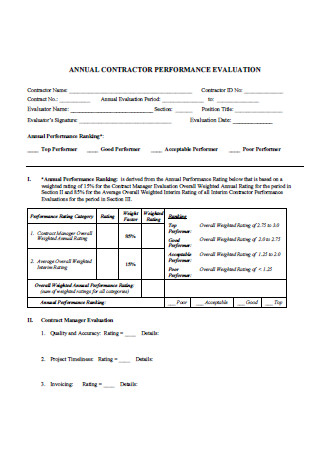
Annual Contractor Evaluation Form
download now -
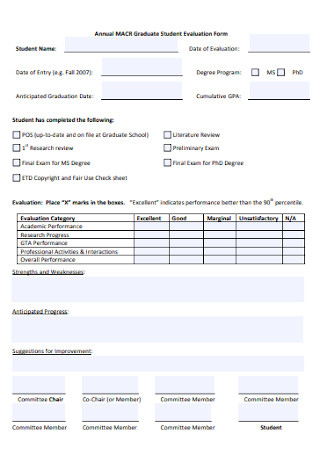
Annual Graduate Student Evaluation Form
download now -
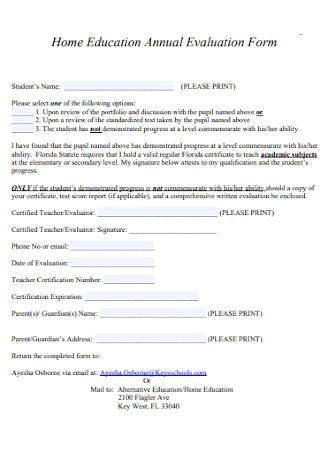
Education Annual Evaluation Form
download now -
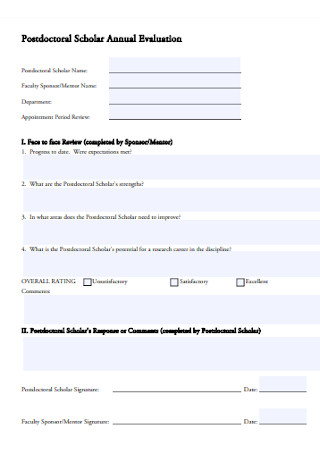
Postdoctoral Scholar Annual Evaluation Form
download now -
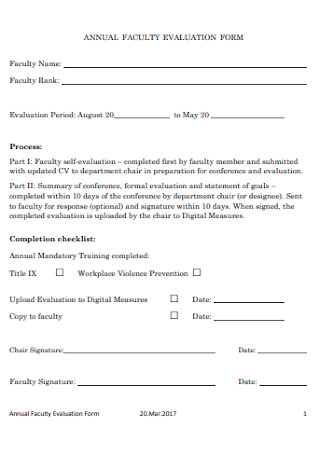
Annual Faculty Evaluation Form
download now -
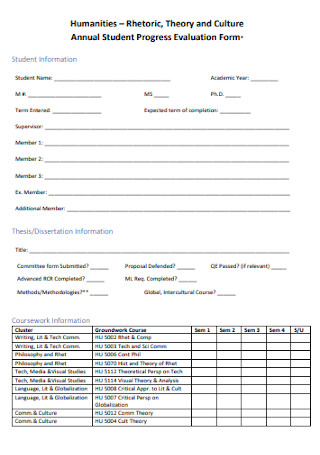
Annual Student Progress Evaluation Form
download now -
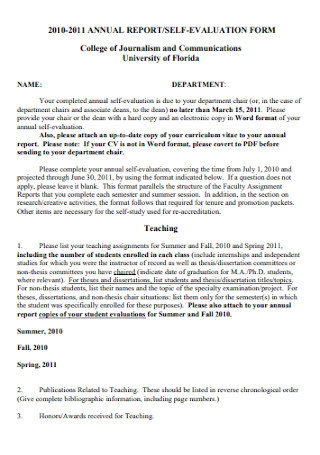
Annual Report and Evaluation Form
download now -
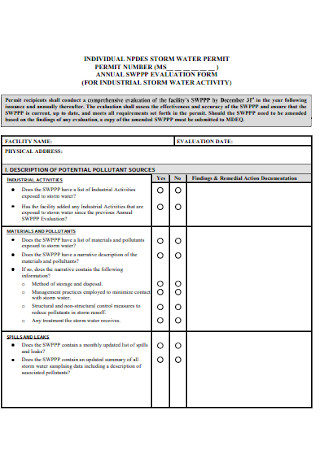
Simple Annual Evaluation Form
download now
FREE Annual Evaluation Form s to Download
25+ Sample Annual Evaluation Forms
What is an Annual Evaluation Form?
Different Types of Annual Evaluation Forms
Benefits of Writing an Annual Evaluation
Basic Elements of a Annual Evaluation Form
How to Create an Annual Evaluation Form
FAQs
What are some examples of annual evaluation forms?
What is the purpose of an annual evaluation form?
What are the essential steps in writing an annual evaluation form?
What are the benefits of annual evaluation forms?
What is an Annual Evaluation Form?
An annual evaluation form is a clear and assessment document that presents a systematic analysis of the crucial activities and performance of a person, student, employee, staff, nurse, specific business firm or organization, and other working professionals on a yearly basis. This is a relevant evaluation form which outlines the suggestions, commendations, as well as positive and/or constructive feedback concerning the status of activities, projects and other events completed in the whole year. Also, it plays a significant role in determining the certain stage of annual growth and development of an individual, a project, a company or an organization, and in drawing up logical decisions.
A report states that there will be 40% higher employee engagement, 25% lower turnover, 18% growth in customer loyalty, and 15% boost in productivity when performance evaluations are implemented well. Thus, all types of executives, general managers, project leaders, medical and health workers, educators, trainers, and other professionals in other sectors should record and evaluate top achievements every year through an effective annual evaluation form for their designated work and other projects.
Different Types of Annual Evaluation Forms
Executives, team managers, operations managers, supervisors, assistant managers, assistant supervisors, and other key individuals in different companies and organizations should earnestly discuss and interact well with their people in realigning them around definite goals and reasonable objectives. In this section, you will learn and understand about the different types of annual evaluation forms. To assist you in this matter, read the following details:
1. Annual Evaluation Form for Managers
Do you want to sustain a strong manager team or department in your company? Conducting a sufficient evaluation of the manager’s performance is accomplished through allowing open and fruitful communication regularly. This method is a great opportunity in measuring the specific areas of satisfaction and items needing modification or progression. An annual evaluation form for managers encompasses critical elements that should be analyzed carefully like attendance and punctuality, decision making and problem solving, interactions and communications, evaluation and open-mindedness, directing board relationships, fiscal management, quality and quantity of work, planning and organization, personal behavior, leadership, and others.
2. Home Education Annual Evaluation
According to statistics, a strong growth led to an increase from 1.4% of the total population of homeschooled children in 1996 to 3.4% or about 1,773,000 children in 2012. Home education or popularly known as homeschooling exists as an alternative to conventional schooling due to a wide range of factors such as the child’s health or safety, special needs, approaches to instruction, concerns about the school environment, and moral or religious reasons. Formal or informal parental teaching style is utilized in the preparation for the child’s home education, and subject areas of instruction with the addition of comprehensive information from Internet course-taking. Through an effective home education annual evaluation form, parents and educators are able to analyze the learning growth and development of homeschooled individuals.
3. Psychiatric Nurse Practitioner Annual Evaluation Form
A psychiatric nurse practitioner is the one who provides proper medical care and attention to people living with mental illness. Nurse practitioners in the psychiatric mental health field guide individuals, and their families with a diverse range of psychiatric services: from studying the relevant medical history of the patient’s mental health condition, determining risk factors which might influence a patient’s mental health and developing diagnoses of their patients’ mental illness according to their assessment to deciding the most effective plan of care. Doing an annual evaluation of psychiatric nurse practitioners can help the clinical management to measure their medical practice and performance in a year. Plus, it involves measuring if the nurse practitioner has completed his or her duties in the entire year..
4. Annual Self-Evaluation Form
What kind of goals do you wish you could have fulfilled? What do you most like about your job? What improvements could be made to make your role easier? What specific components of your work would you prefer to eliminate and why? What career goals do you hope and aspire to achieve in the next five years? Also known as the annual self-assessment form, the annual self-evaluation form brings real insights into how you understand your own performance and recognize how other people perceive your performance. When you write your annual self-evaluation, contemplate on how your actions in the whole year influence others, create a list of your primary achievements, specific areas for improvements, and gather analytics to depict impact.
Benefits of Writing an Annual Evaluation
Several reports have shown that ineffective performance evaluations usually decrease employee performance because many workers are dissatisfied with their evaluations and some believe annual evaluations are inaccurate and painful. Despite this large-scale frustration in traditional performance evaluations, a research study reveals that four-fifths of companies and organizations are still using traditional performance evaluations to some degree. So, what are some notable benefits of writing an effective annual evaluation form? Below are some of the benefits:
1. Records and Examines Annual Growth and Development
Being an academic supervisor, team leader, project manager, or executive director, constructing an annual evaluation form is definitely essential in recording and examining the annual growth and development levels of students, staff, employees, programs, projects and/or other business ventures. This will help you in directing the team, management, board of directors, executives, or committees, as well as investors and shareholders while consciously checking and evaluating the present condition of a student, employee, athlete, nurse, project, business, or company. Also, it is useful in analyzing the possible progress that it can hold towards outstanding development.
2. Elevates Capacity Building
Annual evaluation forms can greatly help in elevating capacity building through learning to make corrections as quickly as possible. Many working professionals can employ a systematic annual evaluation to determine the merit and worth of a specific idea, person, project, or business, and set up their value proposition. There are various valuable methods, standards, and tools to guide you in your annual evaluation.
3. Brings More Confidence
In order to bring more confidence in their abilities, developing an annual evaluation is integral to allow employees and other people to feel more valued and more motivated to learn new skills and improve their current skills set. This will also help them to listen and follow accordingly to the positive and/or constructive feedback from their immediate heads. When they feel more engaged in the evaluation and appraisal process at work, they can make their personal choices which will help in their efficiency and productivity, especially making them more committed, more productive, more loyal, and happier.
Basic Elements of a Annual Evaluation Form
In this section, you will learn how to construct a remarkably written and well-designed annual evaluation form. However, an annual evaluation form has different parts. Include the following elements for you to create an excellent document:
How to Create an Annual Evaluation Form
Inspecting the work of employees through identifying and designating weight to each of the employee’s areas of responsibility and performing an annual evaluation through referencing a numerical value for each quality are important in creating an effective annual evaluation form. Below are some easy-to-follow tips that indicate how to design and craft a professional annual evaluation:
Step 1: Write a Clear Overview of the Accomplishments Once a Year
Define the total accomplishments and milestones of the individual, project, company or organization once a year or simply, the entire year so that you are able to create a clear and organized overview or summary. List down all of the core activities, and tasks that are completed in that year.
Step 2: Construct a Timeline of Annual Achievements and Milestones
What does the timeline of achievements and milestones of the student, employee, working professional, business or project exhibit? Construct a simple timeline of the integral elements already completed in the whole year. Include the exact time, day, and date as well.
Step 3: Develop a Comprehensive and Systematic Evaluation
Explain the yearly accomplishments of an individual, or employee, a project or program, and/or a business firm or organization. Ask the key individuals about the growth and development they encountered in that specific time. Then, identify clear and solid goals and objectives so that you are able to develop a comprehensive and systematic evaluation. Give useful feedback and ask how you can assist or guide them.
Step 4: Use Accuracy and Coherence
If you need to include some numerical figures like percentages and rates in the annual evaluation form, make sure that the numbers are accurate. Keep the ideas and sentences coherent to one another. Plus, you should consider your main purpose and the reader while creating the annual evaluation.
Step 5: Proofread and Revise the Overall Report
Fully check your annual evaluation once a year. Write all the important elements in your annual evaluation form. If you notice that you overlook some sections that require additional points, we recommend that you proofread and revise the overall annual evaluation form.
Step 6: Prepare the Final Annual Evaluation Form
After proofreading and revising, you can now prepare the final annual evaluation form. You may add some notes and other important messages you want to inform your target audience such as investors, stockholders, committee or management members, and/or other individuals on the last part of your annual evaluation form. Skim your evaluation form for final analysis and quality check.
FAQs
What are some examples of annual evaluation forms?
Some examples of annual evaluation forms are annual evaluation form, annual evaluation form for employees, annual evaluation form for managers, annual evaluation form examples, home education annual evaluation form, employee annual evaluation form, fire chief annual evaluation form, teacher annual evaluation form, nurse practitioner annual evaluation form, annual performance evaluation form, annual employee evaluation form, annual vendor evaluation form, annual supplier evaluation form, annual fire drill evaluation form, annual faculty evaluation form, annual self-evaluation form , annual professional performance review evaluation form, annual relationship evaluation form, and more.
What is the purpose of an annual evaluation form?
The purpose of an annual evaluation form is to showcase the annual growth and accomplishments of an individual, employee, project, staff, general manager, executive director, medical practitioner, or business firm through promoting clear communication and valuable feedback on job performance, improving better working relationships, maintaining a historical and real-time record of performance, and committing to professional development. This is crucial when it comes to developing proper decisions and designing systematic plans to be successful in a specific goal, project, or business.
What are the essential steps in writing an annual evaluation form?
Begin your annual evaluation form with a summary or overview paragraph of the yearly goals and accomplishments that are accomplished by the individual, project, program, staff, or the company. After that, include the significant information of the summary and an in-depth analysis of the achieved goals. Create an organized timetable to list down all the accomplishments and milestones that are completed once a year. Insert some charts, graphs, tables, and other visual diagrams to visualize the growth and development of the individual, project or company throughout the year.
What are the benefits of annual evaluation forms?
Some of the notable benefits of annual evaluation forms are recording and examining annual growth and development, elevating capacity building, and bringing more confidence to the employees and others involved in the evaluation process.
Therefore, writing a clear and effective annual evaluation form for yourself, the staff, employees, business, project, program, meeting, organization, or other working professionals is a valuable process in recording and examining annual growth and development, elevating capacity building, and bringing more confidence to yourself and others. Plus, this evaluation process every year is one of the excellent methods in building strong relationships through promoting good communication and organization. So, here are some of our downloadable and printable annual performance evaluation form samples available in different kinds of formats. Simply click the annual evaluation form templates in this article and start downloading now!
